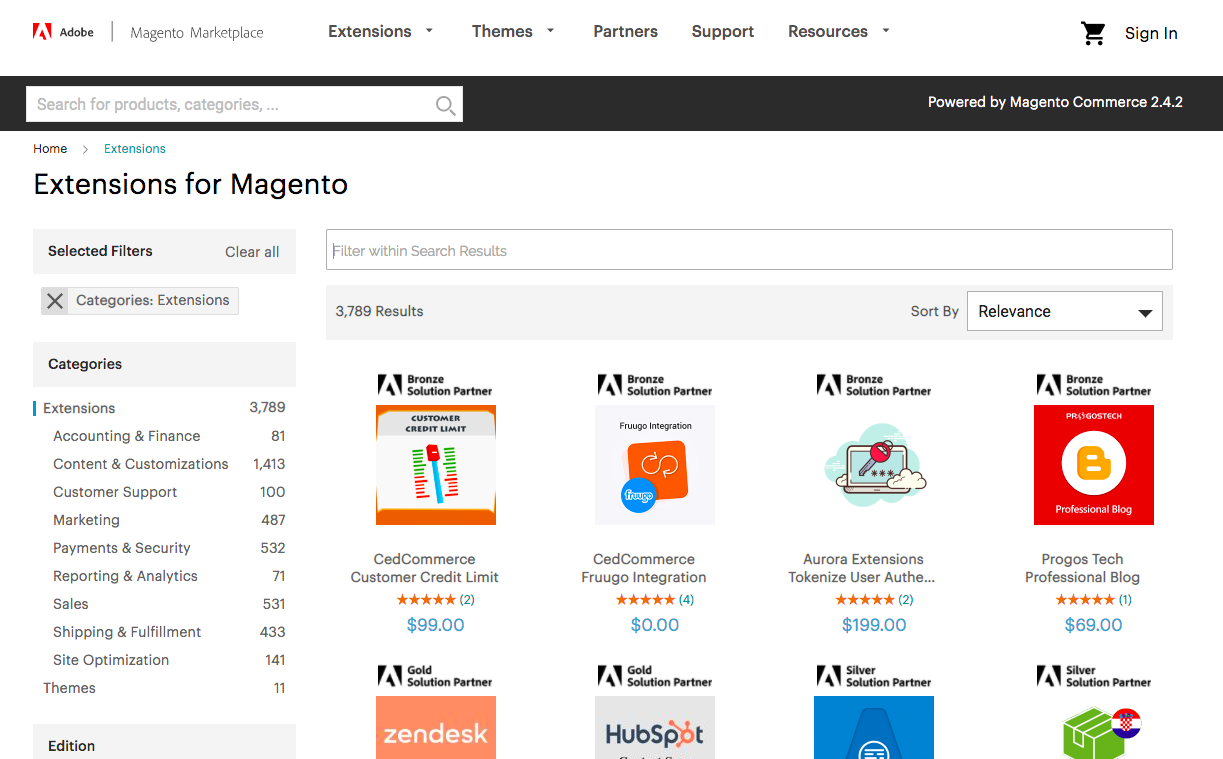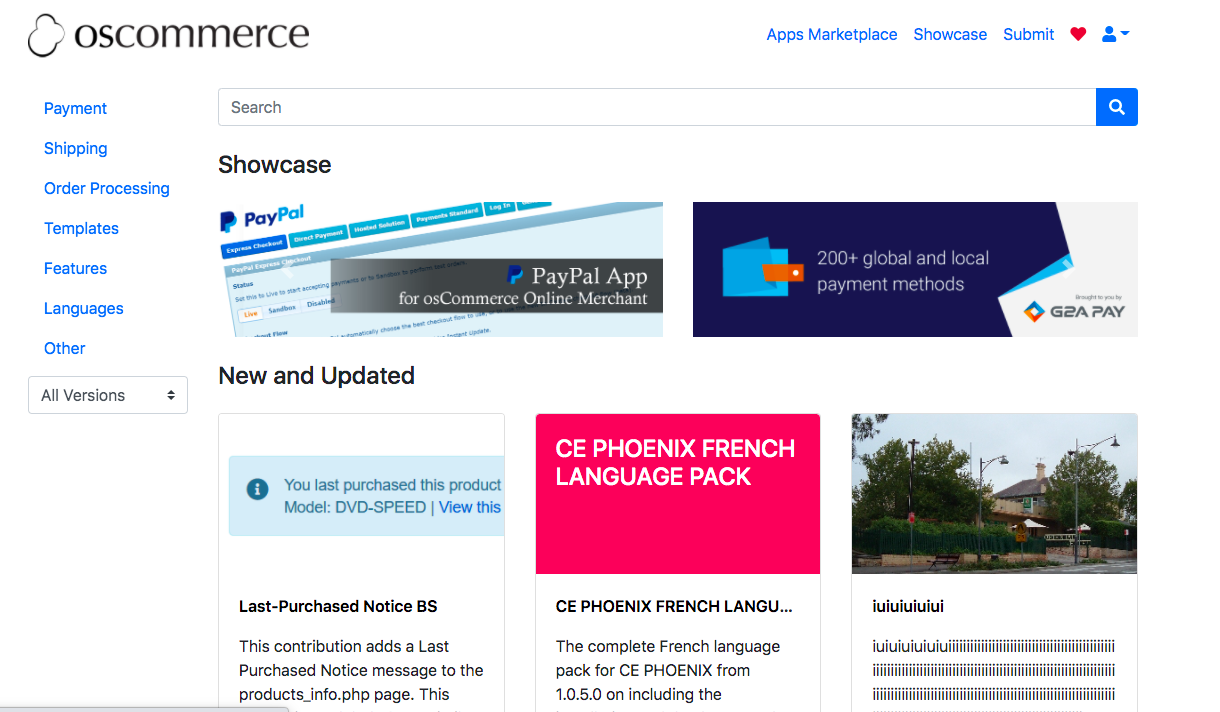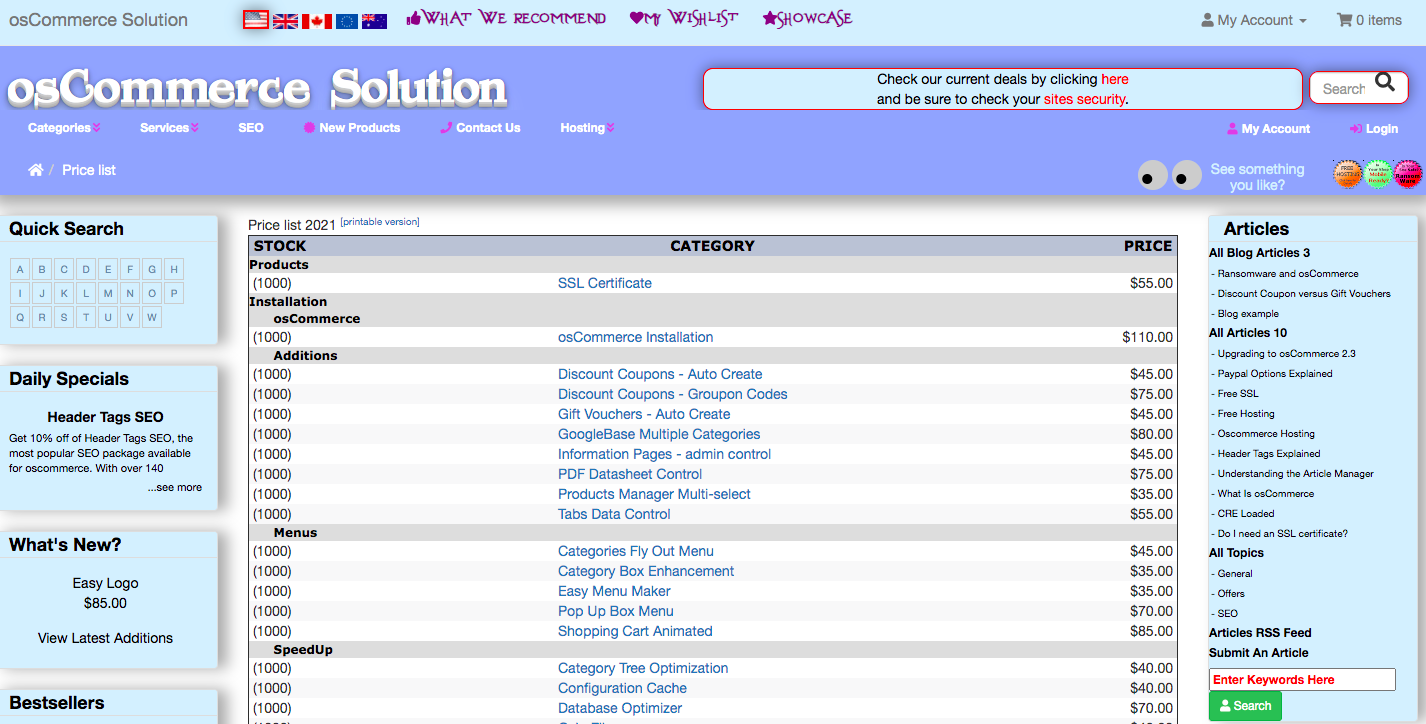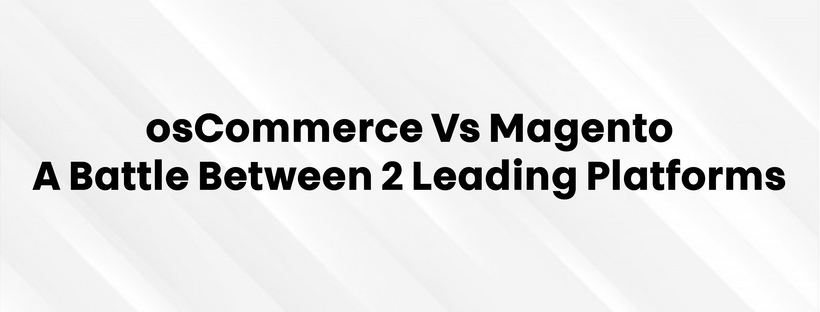Today, we bring you another interesting competition between osCommerce vs Magento – 2 big names in the eCommerce market.
In the world of technology, eCommerce becomes an indispensable component in our daily lives. According to Nasdaq, it is estimated that 95% of all purchases will be through online channels by the year 2040. This has proved the significant growth of eCommerce worldwide.
Besides, approximately 76% of shoppers prefer to go shopping online rather than directly go to physical stores (GeoMarketing). For that reason, almost all businesses are finding ways to expand to online channels.
And the first and vital thing to do on the list is finding the most suitable eCommerce platform. Among some big names in the market, we cannot forget Magento and osCommerce. This blog post will continue the series of eCommerce competitions – osCommerce vs Magento.
Other competitions you may feel interested in:
osCommerce vs Magento – Who Are They?
These are 2 familiar names among eCommerce businesses. Each platform has its strengths and weaknesses that you can consider carefully to make a decision.
About Magento

Without a doubt, Magento is popular when it comes to eCommerce platforms. Magento is an open-source platform written by PHP, helping to create an eCommerce website with all necessary functions quickly.
This platform was first developed by Varien in 2007. And this platform is one of the most popular source codes on Zend Framework today. For over a decade, Magento has grown and become a common name, a heavyweight competitor in the eCommerce field.
Magento is arguably the best e-commerce framework currently, with nearly 200.000 currently live websites created, more than 750.000 websites totally, and about 2.5 million downloads.
At present, Magento offers 2 editions with 3 pricing plans, one of which is free of charge, the other 2 are charged plans based on annual gross sales revenue, which we will mention later in this blog:
- Magento Community Edition (Magento Open Source)
- Magento Enterprise Edition (Magento Commerce)
- Magento Commerce Cloud
About osCommerce

OsCommerce is one of the long-lasting eCommerce platforms. It was started in March 2000 in Germany by project founder and leader Harald Ponce de Leon. OsCommerce stands for open-source commerce, written in PHP, like Magento.
OsCommerce is more familiar with the US and European businesses. According to Built With, nearly 50.000 live websites are developing based on osCommerce, and around 235.000 websites in total, including sites that used the platform historically.
For 21 years of development, osCommerce has proved itself fierce and has become a popular name for businesses. Currently, osCommerce has more than 9.000 free add-ons uploaded by the community; hence, businesses can easily customize their store.
Currently, osCommerce is under new management with significant adjustments to perform better in the future. You can look forward to this new development in 2021.
osCommerce Vs Magento – Detailed Comparison
In this section, we will compare osCommerce vs Magento in various aspects for your better understanding of these 2 platforms’ functionalities, performances, pricing, etc. Thenceforth, you can easily choose the most suitable one for your business.
Features
Magento is famous for containing robust features to build an eCommerce website. It includes both B2B and B2C features in a single installation. Hence, users can develop both kinds of business on one interface.
Top Magento’s features list:
- High scalability
- Reliable security
- Support multi-store in one installation
- Effective content management
- Multiple gateways support
- Excellent search engine optimization abilities
- Fully responsive, mobile-friendly
- Analytics and reporting
- Customer segment
- B2B functionalities: company account, quote, quick order, shared catalog, requisition list, purchase order (only available for Magento Enterprise Edition)
osCommerce only has basic features, enough to develop an eCommerce site. To optimize the online store, users need to download add-ons, which will support additional features. Moreover, osCommerce is disadvantageous compared to Magento as its B2B features are not so powerful.
Top osCommerce’s features list:
- Tax handling
- Customer management
- Smooth payment processing
- Multi-currency and multi-language support
- Orders processing
- Catalog management
- Categories-to-categories and products-to-categories structure
Design

In terms of appearance and design, Magento might be the winner. Both platforms are developed with excellent designs that might catch customer attention at first sight. However, the problem lies in the ease of modification.
Magento is designed with a beautiful appearance. Notably, it is also effortless to customize the design with professional assistance. Therefore, users can quickly transform the default design in their favor, expressing their uniqueness of the store, not to mention there are thousands of ready-made Magento themes developed by third parties.
On the other hand, it is quite a difficult task to customize osCommerce’s design. Although it still has a great default appearance; however, users don’t like the difficulty when they want to change the design based on their demands.
Hosting

There is an advantage of both platforms in hosting, which is the freedom to host your online store. Unlike some other platforms that require complete management from the provider, like Salesforce, Magento and osCommerce are self-hosted. This means that users will get complete control over their online store.
Although this will bring a minor drawback that users won’t have a guarantee from the developer, especially a security guarantee, users can hire a professional to develop the platform and customize the store based on their requirement. This can outweigh the disadvantage.
Nevertheless, there is a difference between these 2 platforms. For the website to operate smoothly, it is required to have Dedicated Server or Virtual Private Server for Magento. Meanwhile, with good hosting and reliable functionality, osCommerce doesn’t need such a server as long as it supports quality PHP and an exceptional MySQL database.
Ease of Use

In terms of ease of use, osCommerce is better than Magento, we suppose. Magento is told to be complicated to develop. Especially for newcomers that haven’t gained or gained a little experience, Magento is quite challenging to deal with. It requires practical knowledge and a deep understanding of documents.
Recently, Magento has developed the platform to become simpler to use. The latest edition is the simplest, with significant modifications, useful toolkits and features to support the store building. If you still run into difficulties when developing, there is massive community support that can assist you. This will be mentioned later in this blog post.
On the contrary, osCommerce is relatively user-friendly. It makes it much simpler to build a website and maintain it with essential tools. You just have to integrate the osCommerce software into any web server with PHP and MySQL.
SEO

Magento SEO performance is more outstanding compared to osCommerce. The platform is highly search-engine optimizable. At default, Magento contains various SEO features that will be helpful for your marketing strategies.
Magento SEO features list:
- Meta tags for homepage, product and catalog pages
- Images optimization
- SEO-friendly URLs
- HTML & XML sitemap
- Canonical tags
- Robots.txt & meta robots
- Advanced layered navigation optimization
- Google Analytics & Google Adwords integration
Meanwhile, such SEO features are not supported by osCommerce default. To optimize search engines while using osCommerce, users need to install add-ons and extensions. This is less convenient than using Magento, which enables users to integrate SEO techniques into their storefronts.
Customizability

Both platforms enable users to easily customize their online store as they are all open-source and self-hosted platforms. Hence, users can freely develop and customize their store in their favor, not limited to the provider’s management. In other words, 100% control will be on store owners.
However, we guess that Magento is a little more customizable than osCommerce. Magento contains a large number of features that might not be available in other eCommerce systems. These features might not be supported in the free version, but they can be accessed through the paid version.
And for osCommerce, it is not as customizable as Magento due to the small number of default features. If users need to optimize their online stores, plugins are required.
Mobile Capabilities

Magento, at default, is mobile-friendly and responsive. This means that it can be displayed on multiple devices without any integrations, and of course, no additional fees are required. For that reason, the mobile experience of users will be enhanced.
In terms of osCommerce, it is also mobile-friendly for users. However, it is required to download and integrate an application on the marketplace into an already responsive store. Despite the free-of-charged application, it is pretty time-consuming to install and continuously upgrade the store.
Extensions & Integrations

Magento is still the winner in terms of extensions and integrations. There are nearly 4.000 extensions in the marketplace and hundreds of thousands of plugins developed by a large number of Magento service providers. Such plugins are available in both free and paid versions.
For that reason, Magento users can freely choose the best extensions, customize and optimize their online store perfectly.

But osCommerce is also no joke in this aspect. osCommerce has more than 9.000 free add-ons, a huge number of extensions compared to other platforms, we suppose. Besides, osCommerce has developed many applications to support various features in terms of, to name but a few:
- Payment
- Shipping
- Order processing
- Templates
- Features
- Languages
When using the osCommerce platform, extensions and integrations are essential. Because osCommerce has limited default features; thus, it depends much on the add-ons for website optimization.
Support

There is one main reason why Magento is so popular in the eCommerce market. It’s because of the huge and highly active global community size. Magento’s “army” has more than 300.000 developers worldwide with many years of experience and knowledge.
Not only that, Magento has a massive global network of 1.300 partners, both technology and solution partners, always available wherever your business is operating. Also, Magento Commerce supports its customers 24/7 through live chat, phone support, email, and vast community forum.
Therefore, Magento users don’t have to worry as there are professionals who support them anytime at any place if they demand.

Different from Magento, osCommerce supports its users through an inquiry system on the forum, which only requires them to register for a free account. This method is quite convenient for users, but it takes time. Customers will have to wait for responses from the provider.
But suppose osCommerce users need direct and immediate supports. In that case, osCommerce also has a Live Chat room that enables users to directly connect to the community, which has over 350.000 members, 1.7 million postings.
Although osCommerce’s community size is not as large as Magento, osCommerce tries to provide the best platform and excellent support to satisfy customers.
Pricing
| Gross Sales Revenue | Magento Commerce (Enterprise Edition) | Magento Commerce Cloud |
|---|---|---|
| Less than $1 million | $22.000 | $40.000 |
| $1 million - $5 million | $32.000 | $55.000 |
| $5 million - $10 million | $49.000 | $80.000 |
| $10 million - $25 million | $75.000 | $120.000 |
| $25 million - $50 million | $125.000 | $190.000 |
Magento offers 2 editions and 3 pricing plans for its users. The Magento Community Edition (CE), free of charge, is quite suitable for SMEs (Small & Medium Enterprises) that demand a low budget and less inventory.
On the other hand, Magento Commerce, including Magento Enterprise Edition (EE) and Magento Commerce Cloud, charges its users based on the annual average gross sales revenue. Both plans contain premium features that are perfect options for large enterprises for large inventory, complicated sales processes.

osCommerce platform is initially free, which is open for every business. But due to a small number of default features and a self-hosting platform, as we have mentioned, users have to pay for additional solutions and hosting services.
In general, Magento is more costly than osCommerce. Therefore, osCommerce is more suitable for SMEs.
osCommerce Vs Magento – Why You Should Consider Magento over osCommerce?

Both platforms have their pros and cons. The answer of which one is suitable for your business depends primarily on various aspects, namely, business size, business field, function, size of inventory, budget, etc.
But there are several reasons why you should consider using Magento rather than osCommerce to build your eCommerce store:
- Powerful Functionalities
Magento, without a doubt, contains robust functionalities. It is definitely the winner in comparison with osCommerce on the same aspect. It supports built-in features for both B2C and B2B online stores. Users can manage both business fields on the same server.
Notably, with Page Builder, Magento allows admins to develop outstanding and logically structured content to catch customer attention. Other tools such as analytics, reporting, SEO, multi-store management are also the strength of Magento, a weakness for osCommerce.
- Various Payment Methods
Magento allows its users to offer many payment methods, which is quite convenient for their customers to make a payment. Also, it is easy for store owners to offer discounts through coupons, loyalty and rewards programs, etc. On the other hand, osCommerce does not have such things.
- Community Size
Magento’s community size is much larger than osCommerce. It has a massive global network that enables users to seek help at any place. While osCommerce offers support via an inquiry system, Magento supports its users on various methods and a full-time basis.
- No-limit customization capabilities
Magento is more customizable than osCommerce, with a large number of built-in features and a massive marketplace of extensions and integrations to help enhance the shopping experience.
Conclusion

Above is our comparison between Magento and os Commerce in detail. We also recommend you using Magento for several reasons to make your eCommerce business succeed.
For the best outcomes, Magento is highly recommended for all types of business, regardless of small-medium enterprises or large enterprises, B2B or B2C business. And osCommerce is commonly used for SMEs.
We hope that you will find this blog post helpful for your success. If you want us to develop other competitions regarding the topic, please comment in the section below. We will respond as soon as possible.
Thanks a lot for reading!

